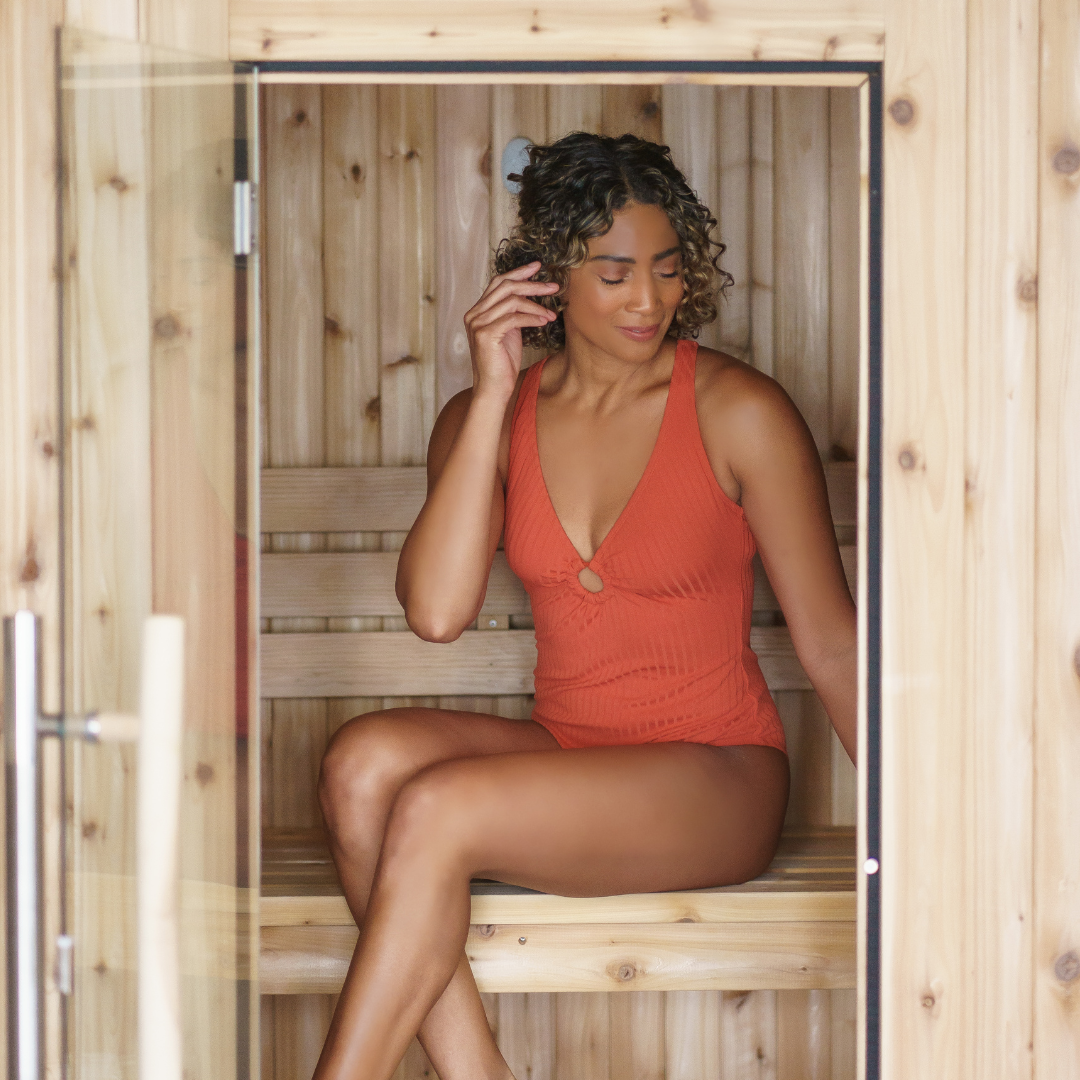Saunas have been used for centuries to promote relaxation, detoxification, and overall well-being. But with so many options available today, you might be wondering: What’s the difference between an infrared sauna and a traditional sauna? More importantly, which one is the best fit for your lifestyle?
Let’s break it down.
What Is an Infrared Sauna?
An infrared sauna looks similar to a traditional sauna, but instead of using a wood-burning or electric heater, it relies on extra-wide carbon fiber heating panels to produce radiant heat.

How It Works:
- Uses infrared light to heat the body directly, rather than warming the surrounding air.
-
Sweating & Detoxification – Both sauna styles help remove toxins and impurities from the body.
- Gently raises core body temperature, promoting deep, detoxifying sweat at the cellular level.
- Lower operating temperature than traditional saunas, making it a more comfortable experience for some users.
What Is a Traditional Sauna?
A traditional sauna follows Finnish sauna standards, using a heater and stones to generate heat. This type of sauna can provide both a dry or wet experience, depending on whether water is ladled onto the heated stones to create steam (löyly).
How It Works:

- Uses an electric or wood-burning heater to warm the air inside the sauna.
- Can be dry (no water on stones) or wet (steam created by adding water to the stones).
- Provides an intense, immersive heat experience that can reach higher temperatures than an infrared sauna.
Shared Benefits: What Do Infrared and Traditional Saunas Have in Common?
While they use different heating methods, both types of saunas offer numerous health benefits:
- Calorie Burn – Sitting in either sauna increases heart rate and metabolism, similar to light exercise.
- Boosted Circulation & Immunity – Heat exposure improves blood flow and immune function.
- Stress & Pain Relief – Regular sauna sessions help relax muscles, relieve tension, and ease aches and pains.
- Energy-Efficient – Both saunas have relatively low energy costs, comparable to running a dishwasher or clothes dryer.
Better with Consistency – While even one session offers benefits, a consistent sauna routine enhances long-term results.
Key Differences Between Infrared & Traditional Saunas
1. Heat Source & Experience
- Infrared Saunas use radiant heat to warm the body directly.
- Traditional Saunas heat the air, creating an intense, immersive heat experience.
2. Temperature Range
- Infrared: 120°F – 150°F (gentler, lower temperatures).
- Traditional: 150°F – 185°F (higher, more intense heat).
3. Heat-Up Time
- Infrared: Ready to use almost immediately; fully heats in 10–20 minutes.
- Traditional: Requires about 45–60 minutes to reach full heat.
4. Social vs. Personal Experience
- Infrared: Smaller, more compact—ideal for individual relaxation in limited spaces.
- Traditional: Often larger, allowing for a more social sauna experience. Some models, like the Shenandoah barrel sauna, can accommodate up to 8 people—perfect for gatherings!
5. Installation & Power Requirements
- Infrared: Plugs into a standard home electrical outlet, making it an easy, accessible option.
- Traditional: Requires a dedicated electrical circuit or wood-burning setup (for outdoor saunas).
Which Sauna Is Right for You?
Not sure whether to choose an infrared or traditional sauna? Here are a few key questions to consider:
- Do you prefer a mild or intense heat experience? (Infrared is gentler; traditional is hotter.)
- Will you use it alone or with others? (Infrared is more personal; traditional is more social.)
- How quickly do you want it to heat up? (Infrared is ready faster; traditional takes longer.)
- Do you have space & electrical requirements? (Infrared models are more compact and plug into a standard outlet.)
- Do you want an indoor or outdoor sauna? (Infrared models are typically for indoor use, while traditional saunas can be either.)
Regardless of which option you choose, both provide incredible health benefits—so you really can’t go wrong!
Want the Best of Both Worlds? Try a Hybrid Sauna!
Still can’t decide? No worries! You don’t have to choose just one.
We offer a variety of hybrid saunas which combine both infrared and traditional heating. With a hybrid sauna, you can enjoy the best of both worlds:
- Use infrared heat for gentle, deep-penetrating warmth.
- Switch to traditional heat for an intense, full-body sweat.
Ready to Start Your Sauna Journey?
If you still have questions, we’re here to help! Send us a message or give us a call at 888-355-3050—our team would love to assist you in finding the perfect sauna for your needs.





